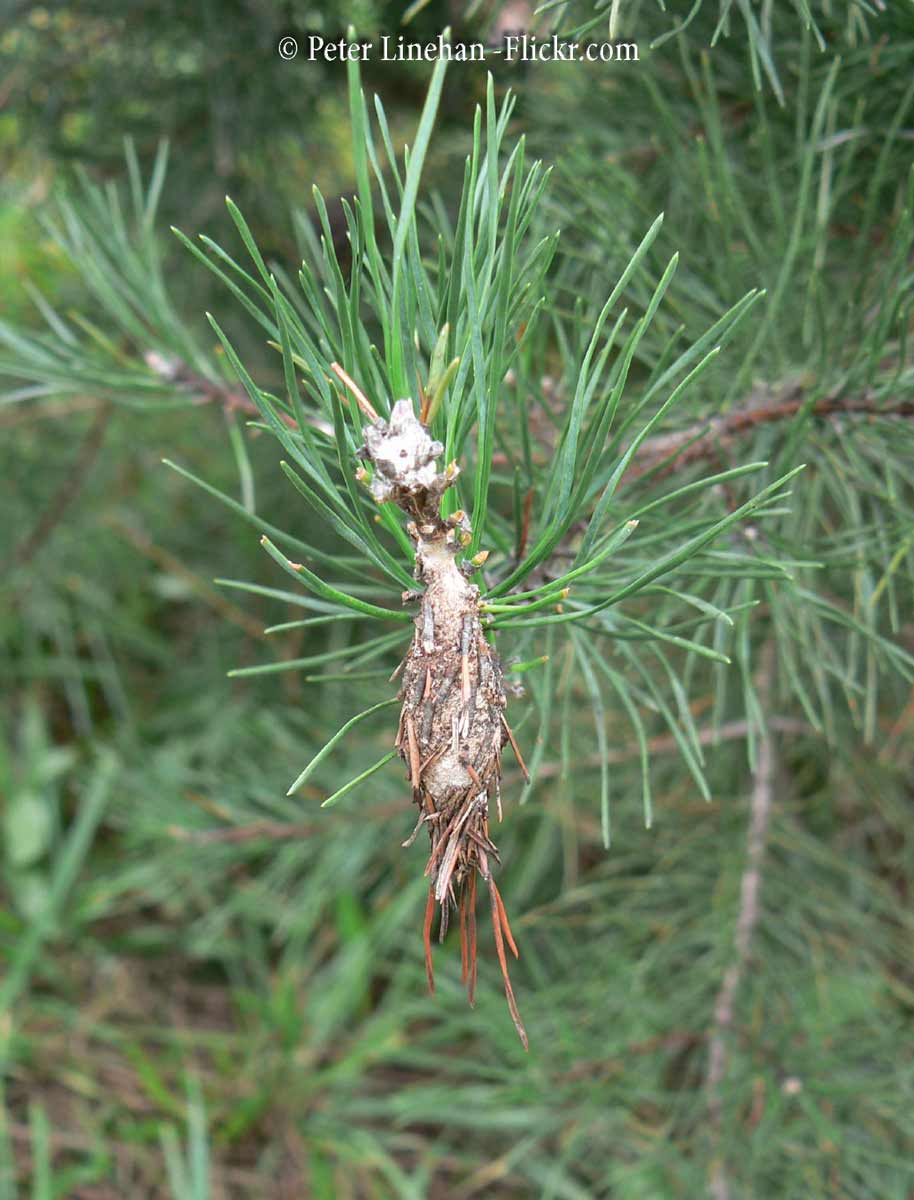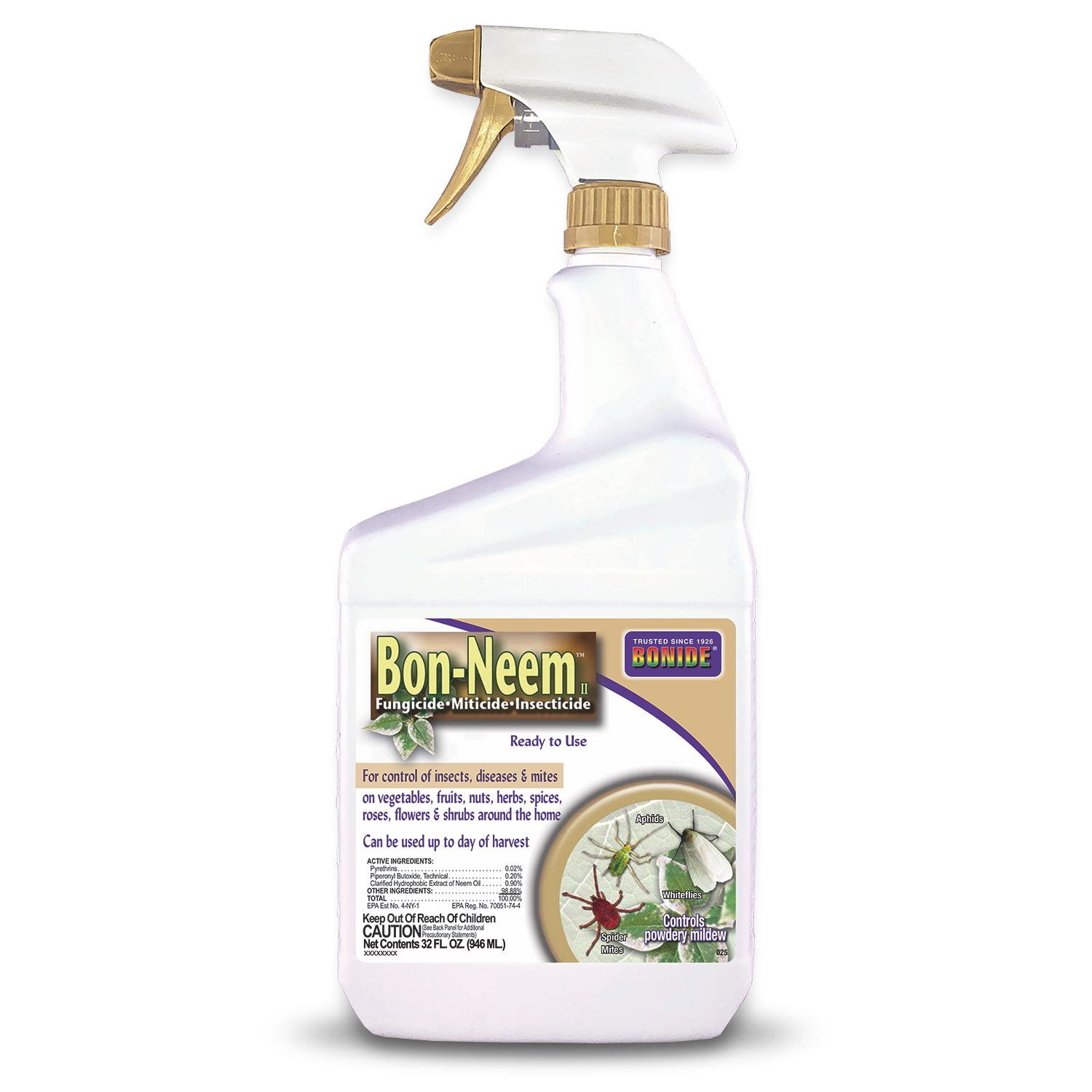
The dangling silken bags, reaching a length of 2 inches, are more noticeable than the small brown caterpillars—each of which weaves its own bag and drags it along as it feeds. Bagworms are found as far west as Texas.
Target: All trees, especially juniper and arborvitae.
Damage: Leaves are chewed from the treetop down; defoliated trees may die. Deciduous trees are less vulnerable, since they can grow a new set of leaves. The silken bands attaching the bags to trees may girdle and kill young branches.
Life cycle: In winter, each bag contains as many as 1,000 eggs. In spring, the caterpillars hatch and disperse to feed for a time; then each one tethers its bag to a twig and enters to pupate. In a few days, the moths emerge. The females, wingless and mouthless, remain in their bags; the small, black-winged males fly in to join them. After mating and laying eggs, the females die. There is one generation a year.
Notes: Treat the larvae as soon as they hatch, before they construct their bags.














